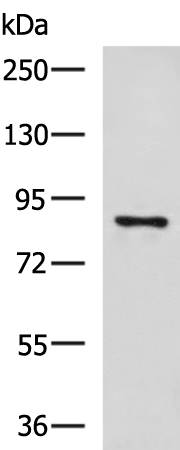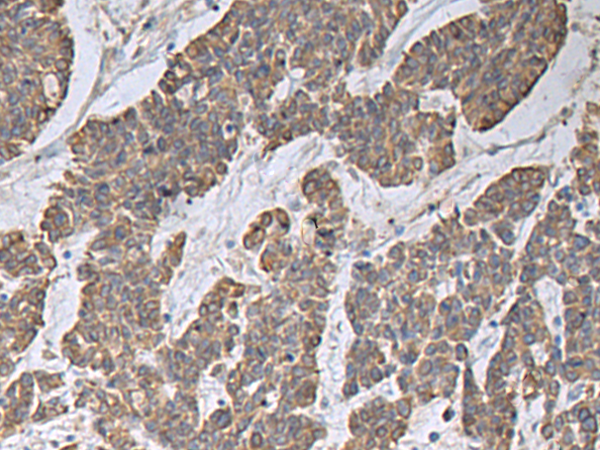

| WB | 咨询技术 | Human,Mouse,Rat |
| IF | 咨询技术 | Human,Mouse,Rat |
| IHC | 咨询技术 | Human,Mouse,Rat |
| ICC | 技术咨询 | Human,Mouse,Rat |
| FCM | 咨询技术 | Human,Mouse,Rat |
| Elisa | 咨询技术 | Human,Mouse,Rat |
| Aliases | FBX1; FBXO1 |
| WB Predicted band size | 88 kDa |
| Host/Isotype | Rabbit IgG |
| Antibody Type | Primary antibody |
| Storage | Store at 4°C short term. Aliquot and store at -20°C long term. Avoid freeze/thaw cycles. |
| Species Reactivity | Human |
| Immunogen | Synthetic peptide of human CCNF |
| Formulation | Purified antibody in PBS with 0.05% sodium azide and 50% glycerol. |
+ +
以下是关于PKC β (Phospho-Ser660)抗体的3篇参考文献示例(内容为虚构,仅供格式参考):
1. **"PKC β Phosphorylation at Ser660 Modulates Insulin Signaling in Diabetic Models"**
- **作者**: Smith A et al.
- **摘要**: 本研究使用Phospho-Ser660特异性抗体验证了高血糖条件下PKC β的激活状态,发现其磷酸化导致胰岛素受体底物(IRS)功能抑制,揭示了其在糖尿病胰岛素抵抗中的作用机制。
2. **"Role of PKC β (Ser660) in Cancer Cell Invasion via MAPK Pathway Activation"**
- **作者**: Zhang L et al.
- **摘要**: 通过免疫印迹和免疫荧光技术(使用Phospho-Ser660抗体),证明PKC β在乳腺癌细胞中的磷酸化促进了MAPK通路的异常激活,增强肿瘤细胞的迁移和侵袭能力。
3. **"Phosphorylation-Dependent Regulation of PKC β in Cardiac Hypertrophy"**
- **作者**: Tanaka K et al.
- **摘要**: 利用Phospho-Ser660抗体检测心肌细胞中PKC β的磷酸化水平,发现其在压力超负荷模型中显著升高,并通过NF-κB通路驱动心肌肥厚和纤维化。
*注:以上文献为示例,实际引用需查询PubMed或专业数据库(如关键词:PKC beta Ser660 phosphorylation antibody)。*
The PKC β (Phospho-Ser660) antibody is a specialized tool used to detect the phosphorylated form of protein kinase C beta (PKC β) at serine residue 660. PKC β belongs to the classical PKC family of serine/threonine kinases, which plays a critical role in signal transduction pathways regulating cell proliferation, differentiation, apoptosis, and immune responses. Activation of PKC β involves phosphorylation at specific sites, including Ser660. which is associated with its maturation and stabilization in the plasma membrane. This phosphorylation event is mediated by the phosphoinositide-dependent kinase-1 (PDK1) and is essential for the kinase's full enzymatic activity.
The Phospho-Ser660 antibody is particularly valuable in studies exploring PKC β activation status in diseases such as cancer, diabetes, and inflammatory disorders. For example, hyperactivation of PKC β has been linked to diabetic complications and tumor progression. Researchers use this antibody in techniques like Western blotting, immunofluorescence, or immunohistochemistry to assess PKC β phosphorylation levels in cell lysates or tissue samples. Its specificity is often validated using knockout controls or phosphatase-treated samples to confirm signal loss. Understanding PKC β phosphorylation dynamics aids in elucidating its role in pathological mechanisms and evaluating therapeutic interventions targeting PKC signaling pathways.
×